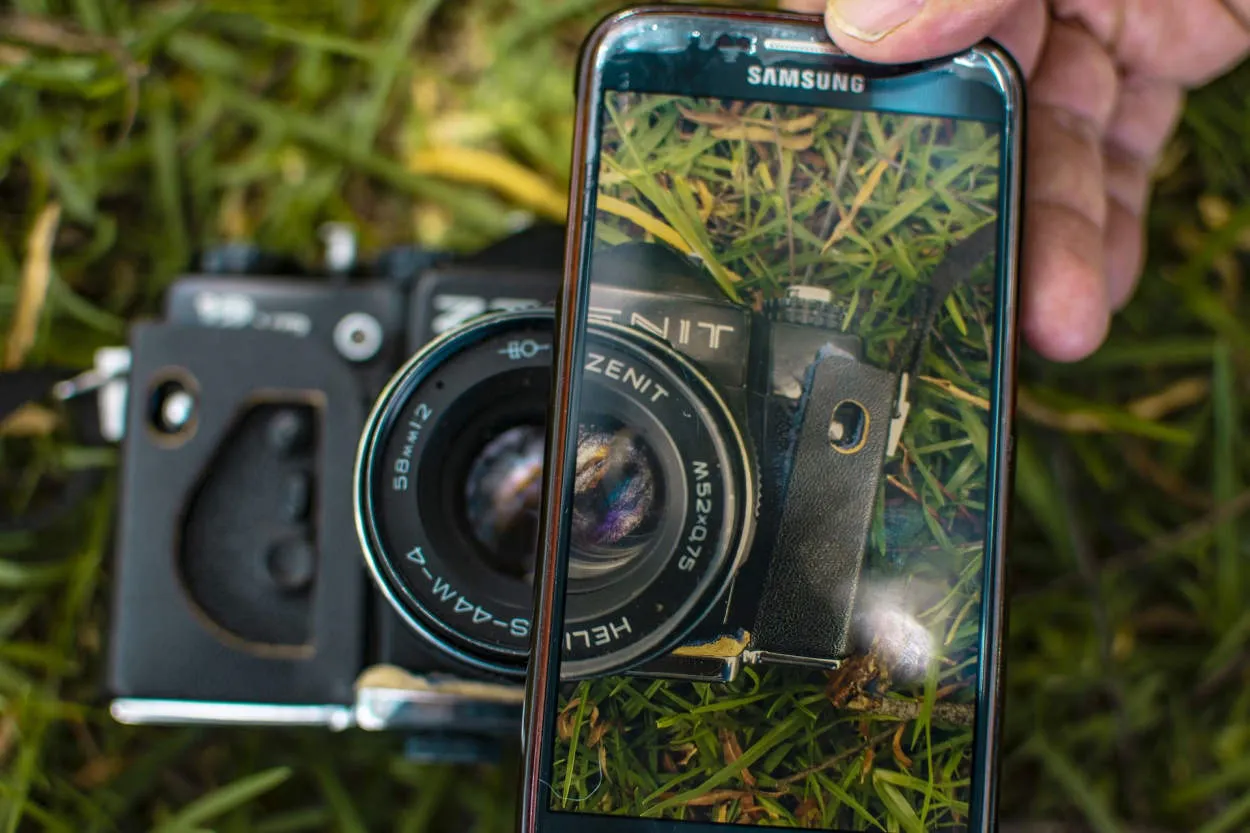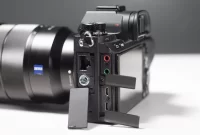The benefits of larger sensors in cameras compared to phones are undeniable. With a larger sensor, cameras can capture more light, resulting in better image quality, improved low-light performance, and increased dynamic range. Additionally, larger sensors allow for better depth of field control, enabling photographers to achieve stunning bokeh effects and create more professional-looking photographs.
Exploring the Importance of Sensor Size in Capturing Image Quality
Sensor size plays a crucial role in determining the image quality produced by a camera. When it comes to capturing stunning photographs, both professional photographers and amateur enthusiasts understand the benefits of using cameras with larger sensors compared to phones.
First and foremost, larger sensors offer superior light capturing capabilities. The size of the sensor directly affects the amount of light it can gather, resulting in better exposure and less noise in low-light conditions. This means that larger sensors allow photographers to capture more detail, especially in challenging lighting situations.
Besides better low-light performance, larger sensors also provide a shallower depth of field. This allows photographers to create stunning bokeh effects, where the subject is in sharp focus while the background appears beautifully blurred. Achieving this effect with a phone’s smaller sensor can be challenging, if not impossible.
Furthermore, larger sensors contribute to improved dynamic range. Dynamic range refers to the ability of the camera to capture details in both the brightest and darkest areas of a scene. With a larger sensor, the camera can capture a wider range of tones, resulting in more balanced and realistic images.
In addition to image quality, larger sensors offer more flexibility in post-processing. The higher amount of data captured by the sensor allows photographers to make adjustments without sacrificing image detail. This is particularly important for professional photographers who need to have full control over the editing process.
While phone cameras have made significant advancements in recent years, they still cannot match the image quality produced by cameras with larger sensors. The benefits of larger sensors in capturing image quality are undeniable, making them a preferred choice for serious photographers.
How Bigger Sensors Enhance Low-Light Performance
When it comes to capturing stunning photographs in low-light conditions, having a camera with a larger sensor can make a significant difference compared to using a phone. Let’s take a closer look at how bigger sensors enhance low-light performance:
1. Increased Light Gathering Ability: Larger sensors have a greater surface area, which enables them to capture more light. This increased light gathering ability results in brighter and clearer images, even in challenging lighting situations.
2. Reduced Image Noise: Bigger sensors offer better noise performance, which means that the images produced will have less grain and noise, especially in darker areas. This results in higher-quality and more professional-looking photos.
3. Improved Dynamic Range: The larger pixel size on bigger sensors allows for a wider dynamic range, meaning they can capture a broader range of tones between shadows and highlights. This leads to more detailed and balanced images with better tonal gradations.
4. Enhanced Depth of Field: Bigger sensors enable a shallower depth of field, allowing for selective focus and the creation of stunning bokeh effects. This can add visual appeal to low-light photographs by isolating subjects and creating a pleasing background blur.
5. Better Low-Light Autofocus: Cameras with larger sensors often have better low-light autofocus capabilities, allowing for quicker and more accurate focusing in dimly lit environments. This is essential for capturing sharp images in challenging lighting conditions.
6. Higher ISO Performance: Bigger sensors generally have better ISO performance, meaning they can produce cleaner and less noisy images at higher ISO settings. This is particularly useful in low-light situations where increasing the ISO is necessary to maintain a fast enough shutter speed.
Overall, the use of larger sensors in cameras provides multiple advantages in low-light photography. From improved light gathering ability and reduced image noise to enhanced dynamic range and depth of field, bigger sensors empower photographers to capture exceptional images even in challenging lighting scenarios.
Depth of Field: Achieving Artistic Blur with Larger Sensors
In the world of photography, one of the key elements that can add an artistic touch to your images is depth of field. It refers to the range of distance in a photograph that appears to be in sharp focus, while the areas in front or behind that range appear blurred. To achieve this effect, larger sensors in cameras play a crucial role.
Larger sensors, as compared to those found in smartphones, enable photographers to have greater control over the depth of field. The size of the sensor affects the amount of light that enters the camera and the resulting image. With larger sensors, more light is captured, which allows for a shallower depth of field.
The benefits of a shallow depth of field are numerous. Firstly, it helps isolate the main subject from the background, drawing attention to the focal point of the image. This is particularly useful in portrait photography, where the subject needs to stand out from their surroundings. Secondly, it can create a sense of depth and three-dimensionality, adding visual interest and a more immersive experience for the viewer.
Additionally, a shallow depth of field allows for a greater control of the narrative in storytelling through photography. By intentionally blurring certain areas of the frame, photographers can guide the viewer’s eyes towards specific elements, enhancing the storytelling aspect of an image.
In conclusion, larger sensors in cameras offer significant advantages when it comes to achieving a desired depth of field. They provide the necessary tools for photographers to create captivating and artistic images with a beautiful background blur, setting their work apart from smartphone photography.
The Impact of Sensor Size on Dynamic Range and Detail Preservation
When it comes to capturing stunning photographs, the size of the sensor in a camera plays a crucial role. In this article, we will explore the impact of sensor size on dynamic range and detail preservation, specifically in comparison to smartphones.
Dynamic Range
The dynamic range refers to the ability of a camera sensor to capture a wide range of tones, from the brightest highlights to the darkest shadows. Larger sensors generally have a higher dynamic range compared to smaller ones. This means that they can capture more details in both highlight and shadow areas, resulting in images with greater depth and tonal accuracy.
Detail Preservation
When it comes to preserving fine details, larger sensors have a clear advantage. Due to their larger pixel size and better light-gathering capabilities, they can capture finer details more accurately. This is particularly noticeable when shooting in low-light conditions or when enlarging images. The larger sensor’s ability to capture more information ensures that every intricate detail is preserved with clarity and sharpness.
Benefits of Larger Sensors Compared to Phones
While smartphone cameras have evolved significantly, their small sensor sizes limit their dynamic range and detail preservation capabilities. This is where cameras equipped with larger sensors excel. By using a camera with a larger sensor, photographers can ensure breathtaking images with exceptional dynamic range and stunning detail preservation.
In conclusion, the impact of sensor size on dynamic range and detail preservation cannot be overstated. Larger sensors provide superior results in these aspects, surpassing the limitations of smartphone cameras. So, if you want to capture remarkable photos with incredible details, investing in a camera with a larger sensor is definitely worth considering.
Conclusion
In conclusion, larger sensors in cameras offer significant advantages over phones in terms of image quality. The increased sensor size allows for better low-light performance, reduced noise, and higher dynamic range. Additionally, larger sensors enable photographers to achieve greater depth of field control and produce professional-looking results. Although phone cameras have improved, they still cannot match the overall image quality provided by cameras with larger sensors.




